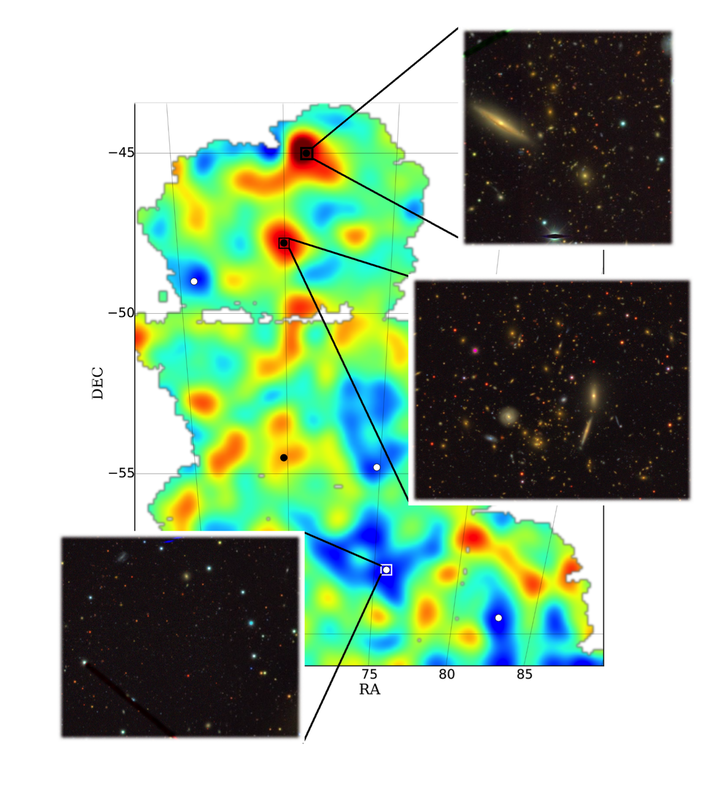|
A new study shows that dark matter is about 1000 times less likely to bump into regular matter than previously expected.
From Symmetry magazine: Scientists have narrowed down how strongly dark matter particles might interact with normal matter. A team led by scientists from the US Department of Energy’s SLAC National Accelerator Laboratory and Stanford University found that, based on the number and distribution of small satellite galaxies seen orbiting our Milky Way, this interaction is at least a thousand times weaker than the strongest interaction allowed by previous astrophysical analyses. “Improving our understanding of these interactions is important because it’s one of the factors that helps us determine what dark matter can and cannot be,” says Risa Wechsler, director of the SLAC/Stanford Kavli Institute for Particle Astrophysics and Cosmology and the study’s senior author. Read full article here. Scientists on the Dark Energy Survey, using one of the world’s most powerful digital cameras, have discovered eight more faint celestial objects hovering near our Milky Way galaxy. Signs indicate that they—like the objects found by the same team earlier this year—are likely dwarf satellite galaxies, the smallest and closest known form of galaxies.
Read more at http://www.symmetrymagazine.org/article/august-2015/dark-energy-survey-finds-more-celestial-neighbors New article from Symmetry Magazine about our trillion particle simulations:
A small team of astrophysicists and computer scientists have created some of the highest-resolution snapshots yet of a cyber version of our own cosmos. Called the Dark Sky Simulations, they’re among a handful of recent simulations that use more than 1 trillion virtual particles as stand-ins for all the dark matter that scientists think our universe contains. They’re also the first trillion-particle simulations to be made publicly available, not only to other astrophysicists and cosmologists to use for their own research, but to everyone. The Dark Sky Simulations can now be accessed through a visualization program in coLaboratory, a newly announced tool created by Google and Project Jupyter that allows multiple people to analyze data at the same time. Read more at http://www.symmetrymagazine.org/article/august-2014/open-access-to-the-universe
|
TidbitsNews, papers, and tidbits from Risa and her Galaxy Formation and Cosmology Group at KIPAC / Stanford University. Archives
May 2021
Categories |

 RSS Feed
RSS Feed